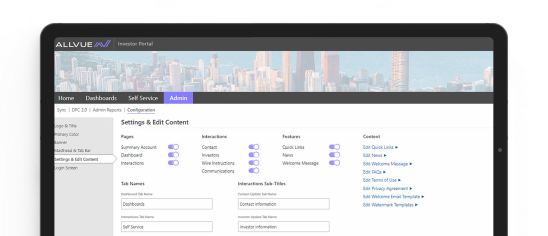
By: David Lazar
Product Manager - CLO & Public Credit
October 21, 2020
The collateralized loan obligation (CLO) market has held up to COVID stress, but recent CLO manager entrants will need to build scale to survive.
[DOWNLOAD WHITEPAPER: CLOs – A Pandemic Retrospective and What’s on the Horizon]
Investor demand for CLO debt remains strong amid pandemic recovery
After facing strong headwinds for much of 2020, CLO managers have seen the CLO market recovery meaningfully, an upswing that can be attributed to a number of factors. On the investor demand side, low yields mean that CLO paper remains attractive compared with much of the fixed income market. CLOs’ tranche structure – and the built-in cushion it provides – drives their appeal to a wide variety of investors with a range of appetites for risk.
The leveraged loans that underlie CLOs have also found better footing. By September, the market had largely recovered losses incurred since the start of 2020 (although lagging other fixed income asset classes that received direct Federal Reserve support, such as investment grade and high yield bonds).1 For banks, insurance companies and other CLO debt investors, the swift recovery of CLOs from the COVID-19 crisis reinforced their confidence in the safety of the market, and reminded them of CLOs’ strong relative performance during the financial crisis of 2008.
Meanwhile, the increasing diversity of the CLO market – with middle market and direct lending CLOs growing in number – is attracting new investors. Middle market CLOs offer considerable attractions for investors, including premiums of as much as 200 basis points compared to leveraged loan CLOs — compensation for the greater credit risk and illiquidity of middle market loans compared to their broadly syndicated equivalents.2 They are also less likely to have covenant-lite structures (which means extra fees paid to lenders for flexibility should things go wrong) and more commonly offer LIBOR floors, which are proving advantageous given the low interest rate environment. While currently only a tenth of the size of the regular CLO market at just $60 billion, middle market CLOs3 represent a small but growing component of both the CLO space and private debt market.
Regulatory changes buoy CLO Managers
The capital supply-side drivers for the CLO market mirror some of those that are spurring demand. Most importantly, the Federal Reserve has emphasized that the low rate environment is here to stay, given the economic shock of COVID-19. Low rates have resulted in cheap fundraising costs for managers – currently around 180 basis points for senior tranches – which have enabled them to cost-effectively refinance existing CLOs.
Two recent regulatory changes have also provided significant boosts to CLOs. The repeal of risk retention rules removed the requirement that CLO managers retain equity of each CLO, either by investing in around half the equity tranche (known as a horizontal slice) or in 5% of each CLO tranche (a vertical strip). The repeal means that managers no longer directly need to raise capital to retain CLO equity. The resulting explosion of CLO managers in 2019 following that change was predicted by PIMCO and other market commentators.4
The more recent regulatory change to Volcker Rule could similarly have long-term benefits for the CLO market. The Modified Rule, which took effect in October 2020, allows CLOs to hold up to 5% of their assets in debt securities other than loans. This change gives managers greater flexibility in the current low-yield market, especially in relation to borrower defaults, where the ability to accept warrants or other equity securities could protect existing term loan investments and provide CLO managers with increased leverage if default rates increase.5
Consolidation trends and the importance of scale
Barriers to entry for new CLO managers have always been relatively low. However, they have fallen further since the repeal of Risk Retention requirements meant firms no longer had to raise funds to post their own equity when issuing new CLOs. Consequently, nascent firms have the potential to respond fairly quickly to resurgent demand for CLOs. Given continuing favorable conditions, new entrants (with the backing from larger parent institutions) can be expected to launch transactions in the coming months.
Despite these low barriers to entry, success in the CLO market is harder to achieve. Scale is important in the CLO business: anecdotal evidence suggests that at least four CLOs are required before overhead costs are fully met. After a banner year of new CLO manager entrants in 2019, this dynamic has fueled some recent consolidation activity, with BlueBay taking on the US CLO management business of its parent Royal Bank of Canada in June and Morgan Stanley acquiring Assurant’s CLO business.
However, CLO managers enter the market intending to scale up rather than sell. Startup CLO managers are under intense pressure to build a positive track record while demonstrating a scalable platform that can grow quickly. In one recent success story, AGL Credit Management has priced its 5th CLO in 2020, bringing its total to seven CLOs since launching its first CLO in March 2019. New CLO managers with less rapid growth are under pressure to achieve similar success or may face becoming acquisition targets by bigger firms with established operations.
Operational efficiency is key as CLO managers look to focus on generating alpha
Despite heavy correlation in the Loan Issuers held across CLO managers, managers differentiate themselves through the experience of their principals, their research capability, and their investment process. However, while often overlooked, operational efficiency can be critical to enabling new CLO managers to achieve the scale necessary for success.
Clearly, a firm’s research capabilities and investment process drive returns. But given the small scale of most new CLO managers, and the necessity of performing multiple roles, platforms that liberate CLO managers to focus on generating alpha rather than managing operational processes has the potential to differentiate firms. CLO managers need to evaluate software and outsourcing services to ensure they choose a solution that complements their objectives and is designed to accommodate the specificities of leveraged loans and CLOs.
The CLO managers I speak with regularly are focused on streamlining the investment process, avoiding manual or duplicate data entry, and consolidating data to improve visibility and risk management. As reporting and compliance requirements have become more complex, finding scalable technological solutions has become increasingly important to manage operational risk. Dedicated Compliance solutions also have the potential to enabling managers to proactively manage their portfolios by understanding the implications of hypothetical trades or the potential risks of downgrades (which became less of an academic exercise just a few months ago).
Similarly, the servicing and settlement overhead inherent to Loan Operations is time-consuming for new CLO managers. Managers are aiming to grow their business without a commensurate hiring of back office personnel and are increasingly choosing to outsource back office tasks to third-party partners. Choosing the right software and service partners is now viewed as an operational strength by rating agencies and is in many cases a selling point to prospective equity investors.
Allvue’s loan management system for CLO managers
To meet these needs, Allvue offers a comprehensive, highly configurable suite of solutions for CLO managers that includes portfolio management, research management, trading, and compliance. The platform aggregates data from both internal and external data sources, giving investment professionals a singular, integrated solution that powers 50 of the top 100 CLO managers in the world. The platform supports the entire investment lifecycle and can be configured to model any workflow, store any data, and integrate with any system.
Interested in learning more?
For further insights, read David Lazar’s top tips for CLO managers.
Or, request a demo to find out how Allvue’s CLO management solution empowers CLO managers to make better investment decisions.
Sources:
- https://www.spglobal.com/marketintelligence/en/news-insights/latest-news-headlines/us-leveraged-loan-market-wraps-6-month-trek-from-covid-lows-to-positive-returns-60410363
- https://www.connect.media/middle-market-clos-carry-higher-risks-along-with-high-returns/#:~:text=Increasingly%2C%20though%2C%20CLOs%20are%20being,six%20years%20ago%2C%20says%20Bloomberg
- https://www.connect.media/middle-market-clos-carry-higher-risks-along-with-high-returns/#:~:text=Increasingly%2C%20though%2C%20CLOs%20are%20being,six%20years%20ago%2C%20says%20Bloomberg
- https://blog.pimco.com/en/2018/03/paradigm-shift-what-risk-retention-repeal-would-mean-for-the-clo-market
- https://www.milbank.com/images/content/1/3/v6/136186/Volcker-Rule-Amendments-Back-to-the-Future-for-CLOs.pdf
More About The Author

David Lazar
Product Manager - CLO & Public Credit
David Lazar is Product Manager for CLO and Public Credit at Allvue, managing the product roadmap for the business line. David was on the Professional Services team at Black Mountain Systems for 7 years, which included overseeing the Portfolio Compliance Implementations team. Prior to joining the company, he spent two years as a Business Consultant at Eze Software Group. He is a CFA Charterholder and holds Masters of Arts and Bachelors of Arts in Economics degrees from University of California, Los Angeles.


